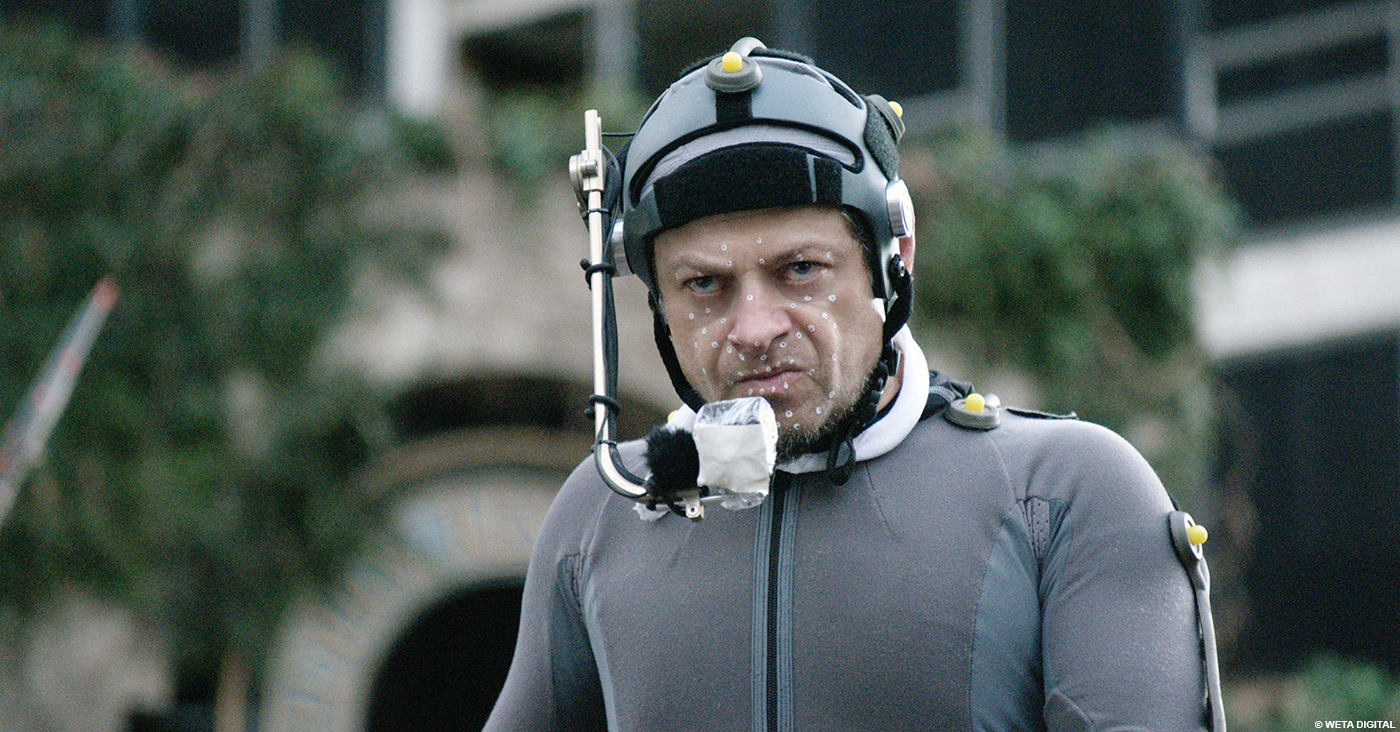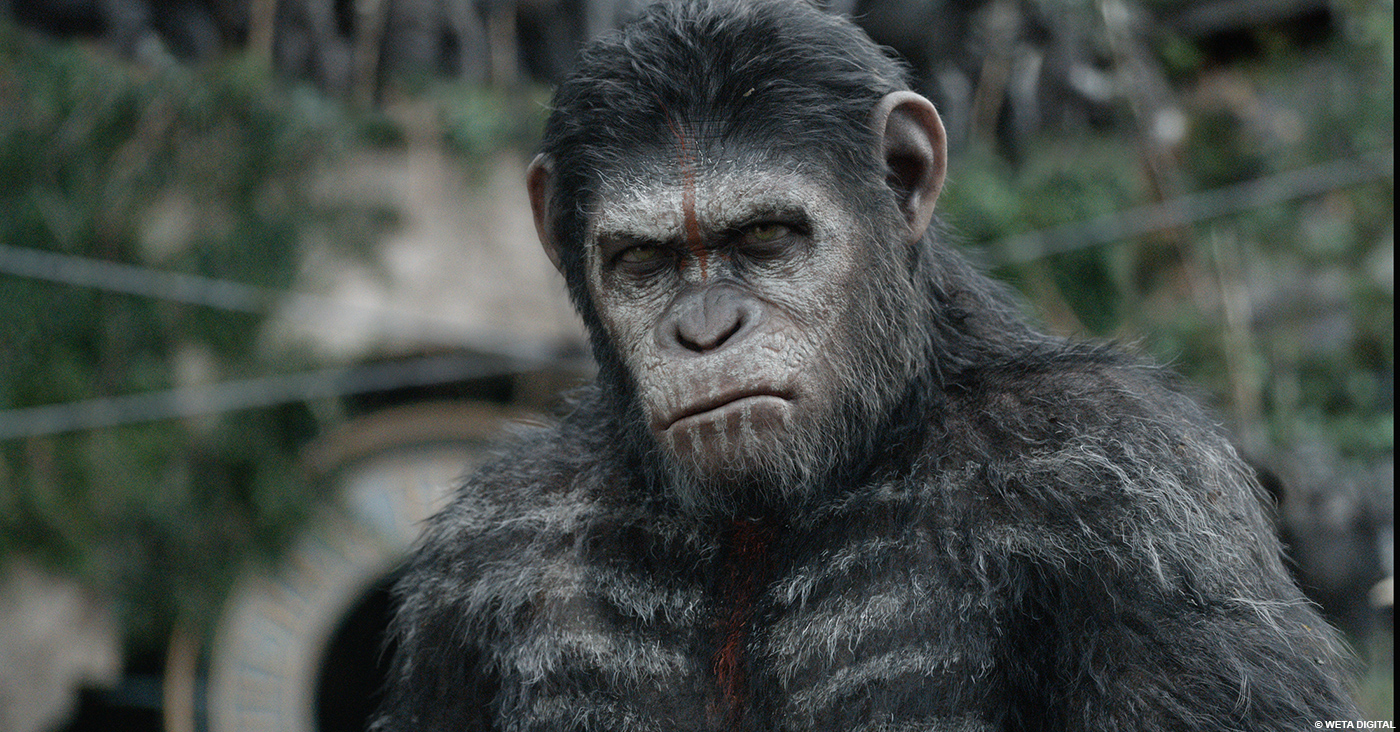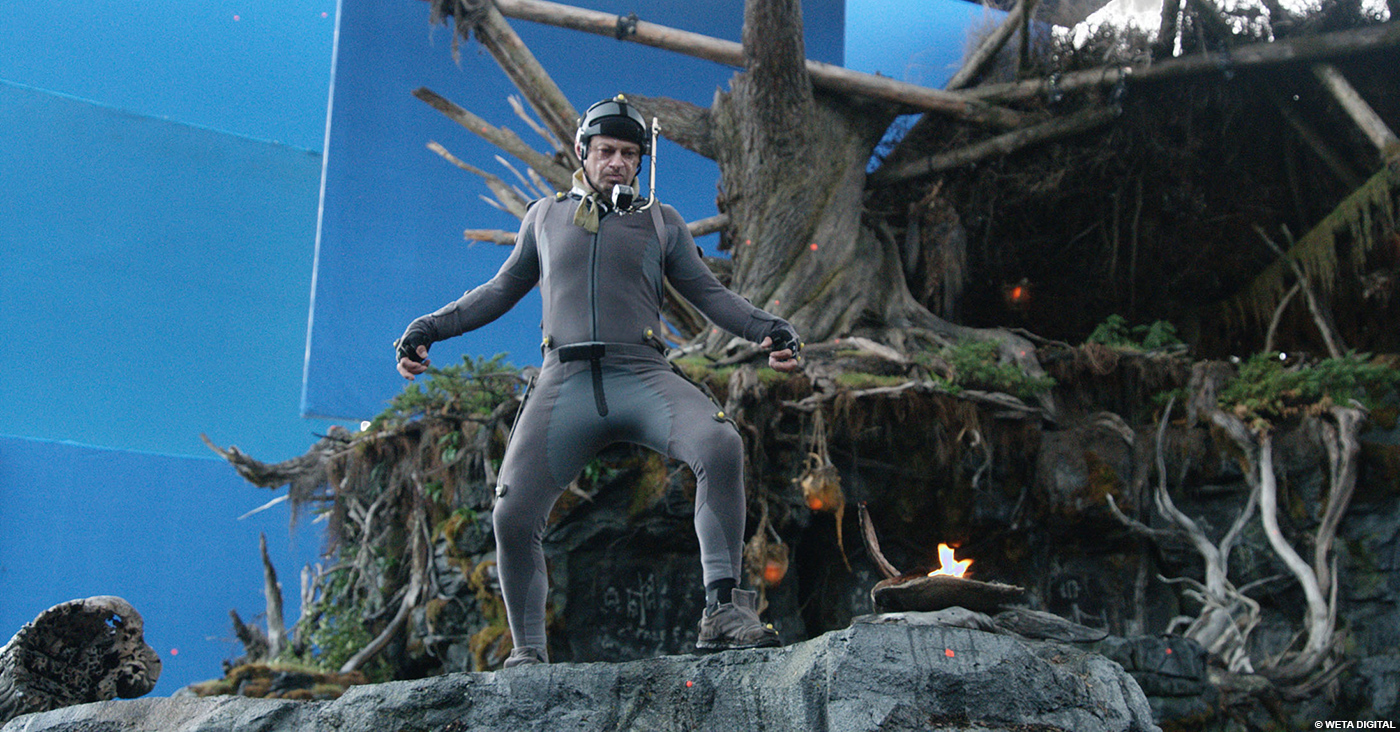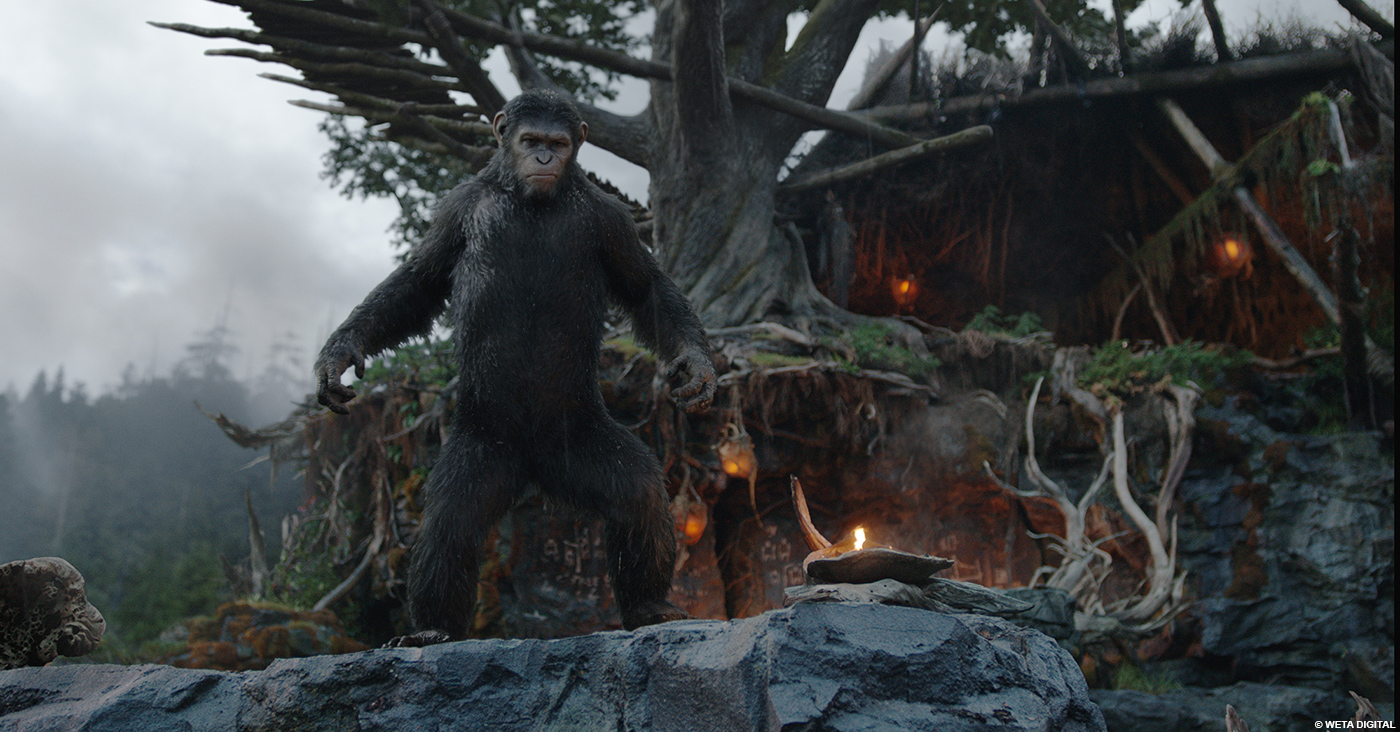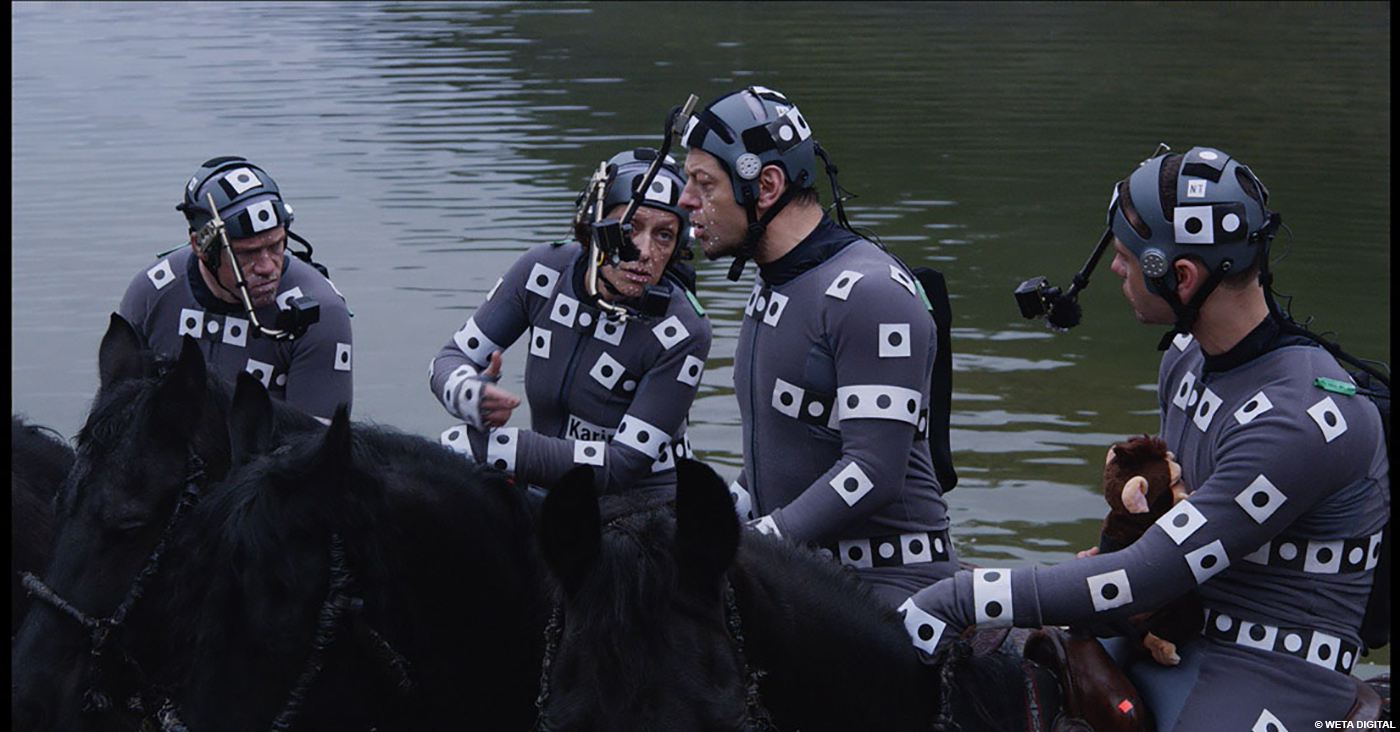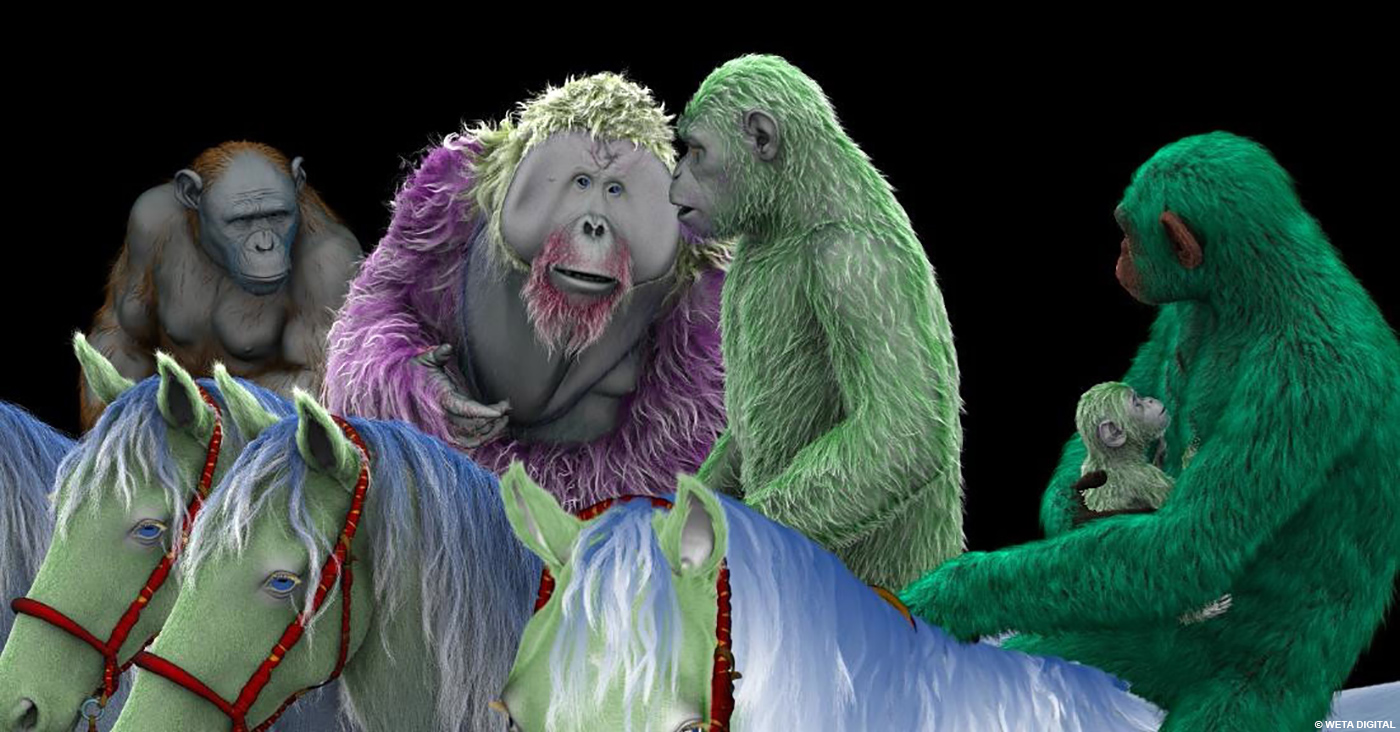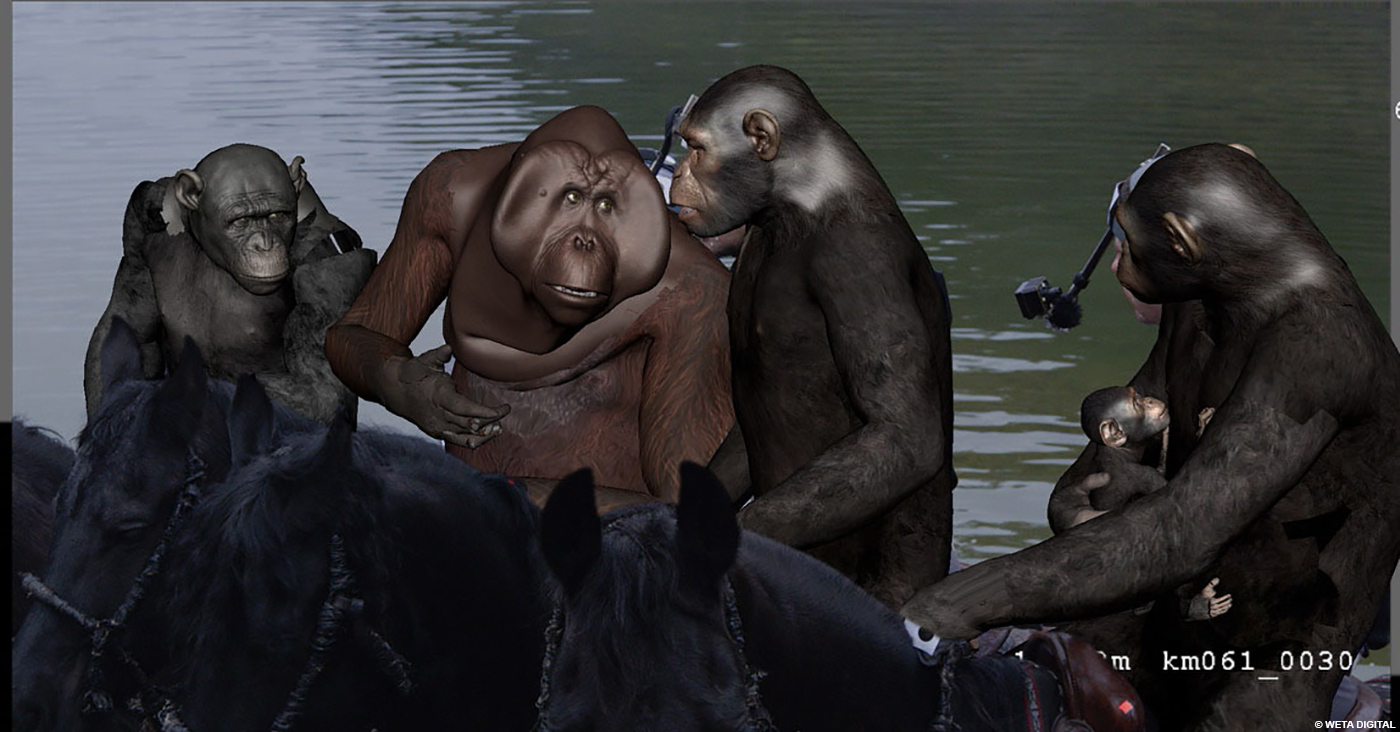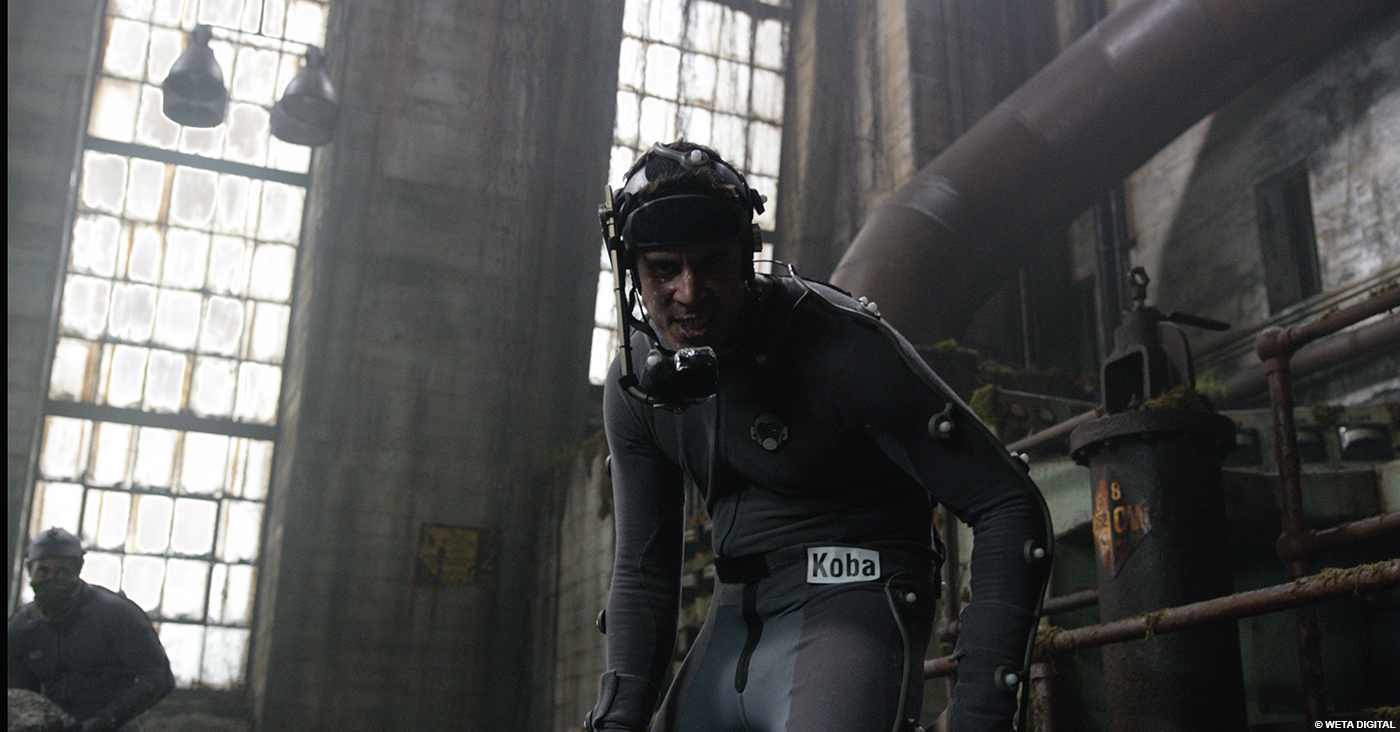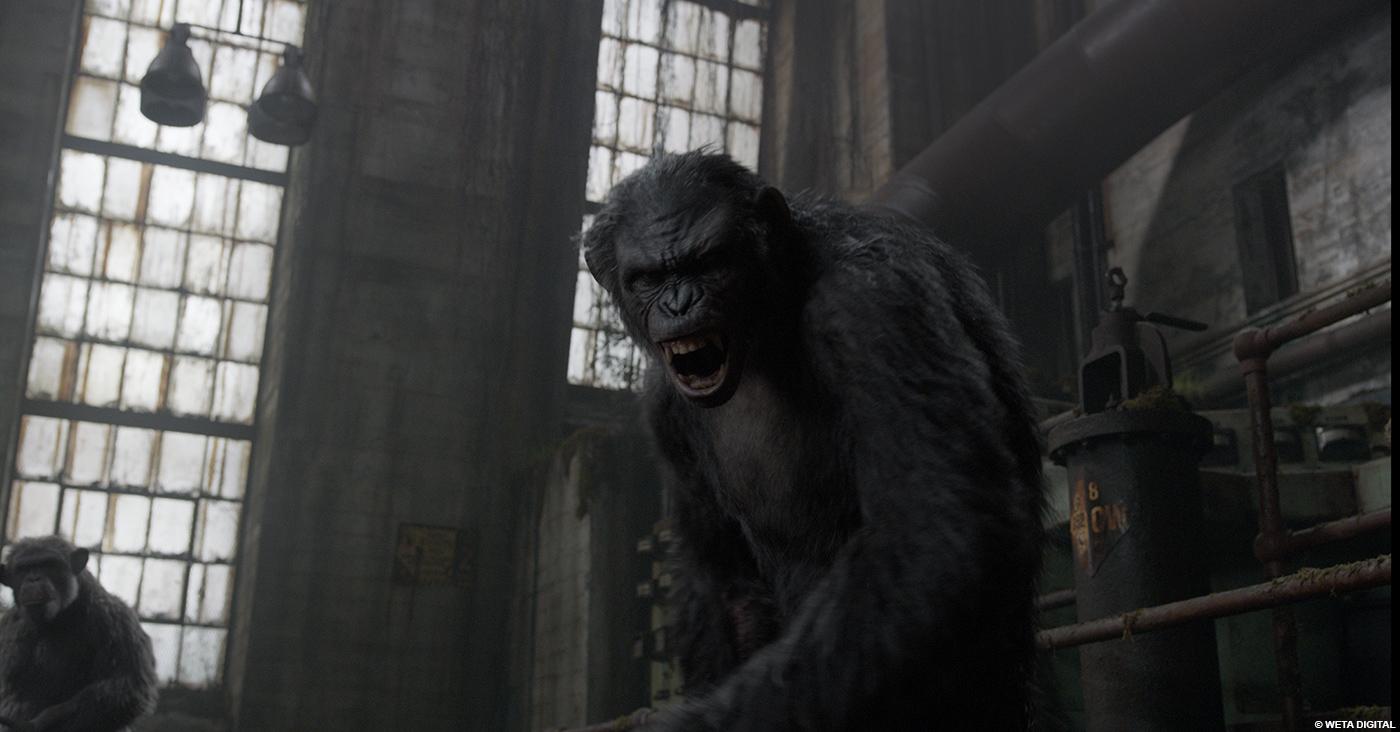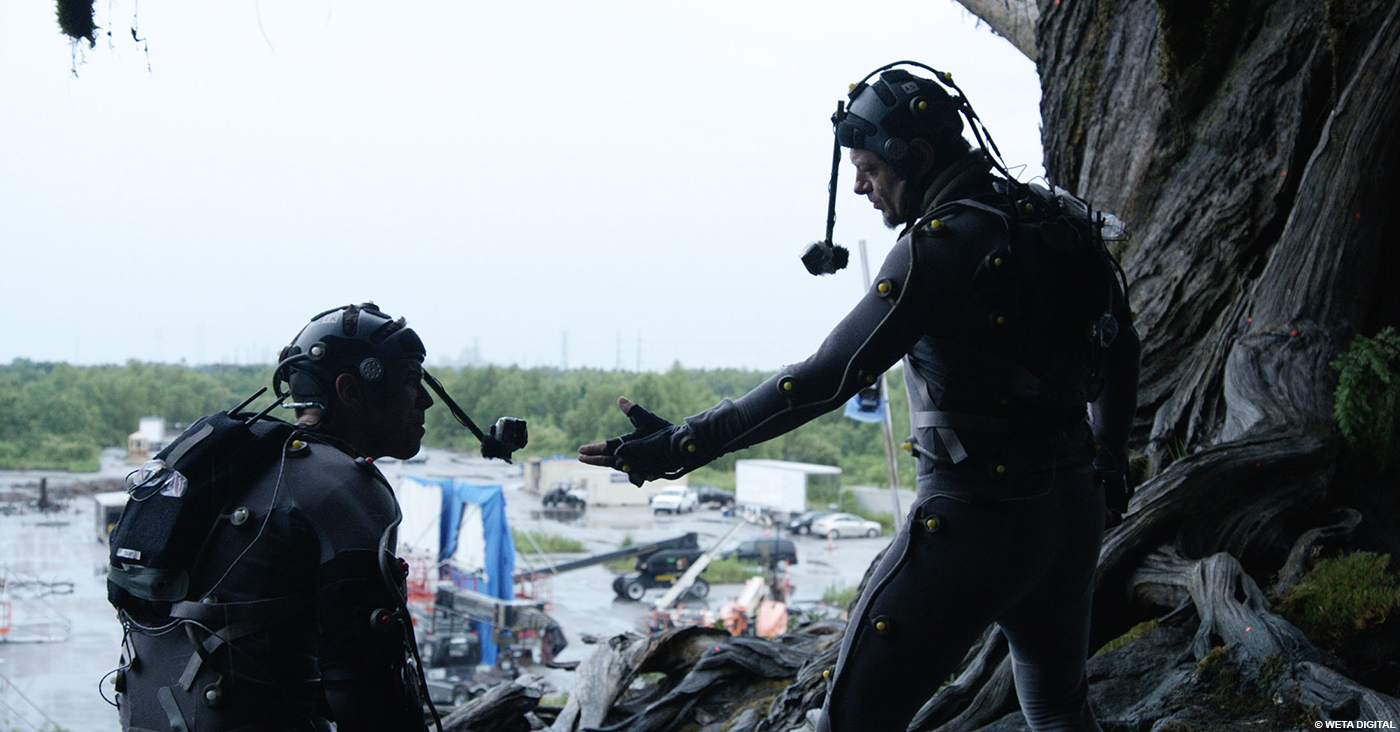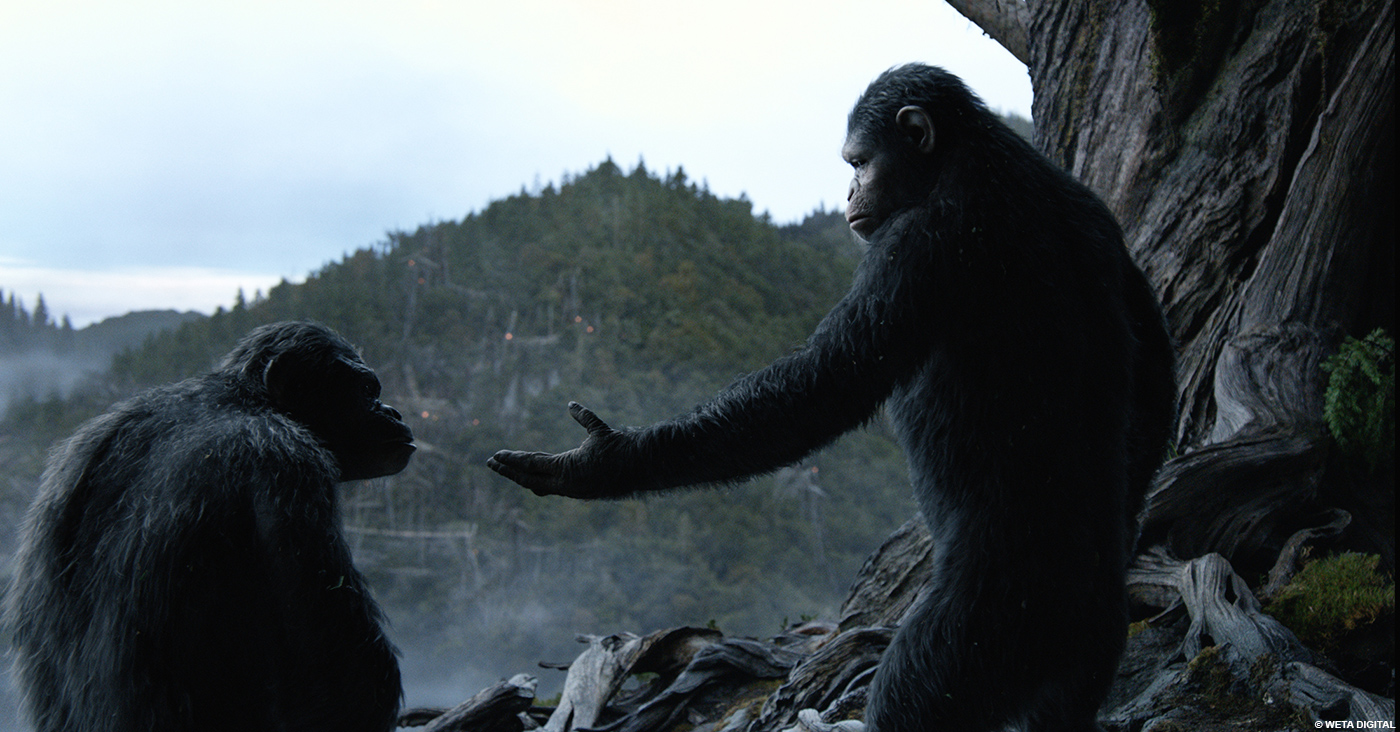Daniel Barrett has worked in the animation world for nearly 10 years. He joined Weta Digital for BRIDGE TO TERABITHIA. He then worked on projects such as AVATAR, RISE OF THE PLANET OF THE APES or MAN OF STEEL.
What is your background?
I studied Fine Arts at university and have a BFA with a sculpture major. I worked for a New Zealand sculptor for several years before deciding to go back to school to learn some new skills. I was studying graphic design when someone introduced me to computer animation. As soon as i saw the tools I knew that animation was for me. I joined the 3D animation course and 6 months into it I was lucky enough to get a job working for a small company on a TV series. After we finished up that project i spent a couple of years working in commercials before a friend invited me to head up the animation team on JANE AND THE DRAGON – a TV series being produced by Weta Workshop and Nelvana. I joined Weta Digital immediately after this. My first project at Weta Digital was BRIDGE TO TERABITHIA.
What was it like to be back with Caesar and his team?
It was a real thrill. One of the reasons we were seeing them again was that Rupert Wyatt did such a good job on RISE OF THE PLANET OF THE APES, and it was gratifying to have been a part of that success. As with any project you are always thinking of ways that you could do better next time, but it’s rare to get an opportunity to have another crack. DAWN was chance to build on all we had learned on RISE. And from a purely personal point of view, I like these apes. Who wouldn’t want to hang out with Maurice again?
How was your collaboration with director Matt Reeves?
Matt Reeves is great. He’s has a very inclusive way of working. He welcomes the input of others and is very open about the film-making process and open about the way he makes decisions. But I think his greatest strength is that he places an emphasis on story and character and is never seduced by the technology. Everything that we did served the story and was not spectacle for the sake of spectacle. It’s a great place to be for a VFX artist because a director like Matt can ground your work in a believable and compelling world – the battle is half-way won before you even begin. And on top of all that he’s just a lovely, funny guy who manages to carry the weight of a big budget feature on his shoulders while making things fun for those around him.
What were his expectations about the characters animation?
In general his expectations were very straightforward – match the performances of the actors. There were plenty of discussions had about the translation of human motion to ape motion, but the emotional performances were discovered during principal photography and over a series of motion capture stage sessions in late 2013 and early 2014.
How did you collaborates with Senior VFX Supervisor Joe Letteri and VFX Supervisor Dan Lemmon?
Dan Lemmon was the show VFX Supervisor on DAWN. We have worked together now on our last three projects (RISE OF THE PLANET OF THE APES, MAN OF STEEL and DAWN) and have a great working relationship. Fellow Animation Supervisor Paul Story and myself would meet with Dan most days to review animation. As Senior VFX Supervisor, Joe Letteri has overview of all projects going through Weta Digital. We would meet with him at least once a week for animation reviews.
Can you describe one of your days on-set and then during the post?
Dan Lemmon (along with VFX Supervisor Erik Winquist) were the on-set supervisors. Dan has a great understanding of the motion capture and animation process so I’m always happy to leave this side of things to him. Weta’s Motion Capture Supervisor Dejan Momcilovic was also on set every day. I supervised the volume motion capture sessions in New Orleans, Los Angeles and Wellington. A typical day would involve meeting with grips in the morning to discuss physical builds on the floor (sets that match the environments in locations already shot), full days of shooting followed by another meeting with the grips to plan for the following day. First Assistant Director Mathew Dunne did a great job of organizing days so that each had a combination of physically-demanding and sedate action. It can be extremely exhausting for an actor to be running around for 10 hours on arm extensions.
During post my days varied depending on what part of the schedule we were in. Early-on I spent a lot more time with the modelers reviewing and testing facial rigs, and later in the schedule a lot more of my time was spent reviewing animation. A typical day later in the schedule would involve animation dailies (reviewing animation with animators in a screening room) at 10am, a call with Matt Reeves around lunchtime, various meetings in the early afternoon, animation rounds (walking around animator’s desk for animation review) at about 4pm and an animation review with Dan Lemmon in the early evening. My days were pretty full, so if i wanted time at my desk for animation or testing this would happen in the evenings or on the weekend.
What are the main changes about the animation pipeline since the last Apes movie?
The main change that impacted on the animation team was that DAWN was shot stereoscopic. This made for greater technical challenges within our scenes as well in our animation. You cannot cheat the depth of CG elements in a stereoscopic environment. It might look fine in 2D, but as soon as you put the glasses on it all falls apart.
Other than that there were no significant changes in day to day work-flow. Any changes that were made were more “under the hood”. For example, we did make changes to the animation and facial rigs and tweaked the facial solver, but an animator’s average day was much the same experience this time around.
Can you explain in details about your work with Andy Serkis and the other actors?
A lot of the work that I did with the actors was for stunts, BG action and body pick-ups (where we have a good facial performance for the day, but the body motion did not match the intended environment). I was also on stage with Matt when he was directing to ensure that we weren’t letting anything through that might hurt us later. The kind of thing that I would be watching for was body mechanics (moving like an ape) and staging (making sure the performances stayed within the confines of our CG sets or the plates that we had already shot). On the whole it was all about getting great performances, so if I saw minor technical issues in performances Matt liked I would usually make the call to address the problem in animation.
Can you tell us more about the performance capture process?
Technically-speaking it’s pretty straightforward. The actor works in a “volume” created by the combined field of view of an array of cameras (could be a stage, set or location). The actor has markers placed strategically on the suit they are wearing. These markers usually line up with the pivot points of the actor’s joints (an elbow or wrist, for example). As long as all of these markers can be seen by at least three cameras at all times their position can be accurately triangulated and placed in space. Once you know where that elbow and wrist sits in space, you know where the forearm is.
Facial capture is a little different. The actor has dots painted onto his or her face and wears a helmet that acts as an anchor for the face cam boom. This boom holds a small camera that sits about eight inches in front of their face. This camera captures a 2D image of the performance (the dots moving) which are tracked and then fed into a solver that makes informed guesses as to which muscles are firing based on the movement of the dots.
Having said all that, the performance capture process for the actors and director should be all about acting. Weta’s motion capture team goes to great lengths to make the tech as invisible as possible. Admittedly a camera eight inches from your face at all times is not exactly “invisible”, but we do have techniques for getting out of the way if we need to. Sometimes we will remove face cams or active marker mocap suits (replacing them with simpler, less heavy suits) if they are getting in the way of a performance. For all set-ups we have extensive reference camera coverage (body and face) so that if we don’t get mocap data we are still capturing the performance (to be key-framed later).
This movie introduced Caesar’s baby. What was the main challenge with him?
The biggest challenge with this little guy was striking the right balance between newborn/infant wobbliness and physical adeptness. Matt was keen on some of the clumsiness that you see in the movements of infant chimps and humans as it added a vulnerability and an endearing quality to him, but at the same time he needed to be able to run and climb with some ease. Obviously there was no motion capture for the little guy – he was animated based on reference.
What were your references for the baby?
We had video reference of juvenile chimps aged from a few months through to about a year or two old. These clips helped inform a lot of the baby animation, but when it came to the birth scene we actually looked at human baby births for reference.
There are two impressive moments in which Koba is ‘acting the ape’ and then becomes Koba again. How did you manage these great animation changes?
Easy. Exactly match what Toby Kebbell did on the day. It’s not actually that easy, but what we do have in his performance is a template that we constantly refer to. There is always a great deal of translation from the human face to the chimp face, but the emotional heart of the performance is 100% Toby. His performance is so strong in DAWN and to the animation team this was a gift. It’s such a pleasure to work with a character like Koba – unhinged, gun-toting Bonobo chimps don’t come along that often.
Many shots involved an impressive number of apes. How did you handle the animation for so many characters?
Heavily populated shots are always a challenge. As a rule of thumb, the Animation department deals with foreground characters, the Motion Edit department are responsible for mid-ground crowd and the Massive (crowd simulation) team populate the background. In practice, however, it’s rare for these divisions of labour to be so neat and tidy. The Motion Edit department are really another animation team who deal solely with mocap data, and it’s not uncommon for them to cover shots from hero foreground right through to deep background. This team (led by Bassim Haddad) did incredible work on DAWN, dealing with huge scenes and choreographing action that felt random and natural without allowing apes walk through each other.
In DAWN we also had shots (the 360 degree tank turret shot is a good example) where the sheer length of the shot demanded a further of division of labour. There were five animators assigned to this shot: one dealt with Koba for the duration of the shot and the other four had a quarter of the shot length each to deal with crowd. Each of these animators worked with the Motion Edit team to create the mayhem we see in the film.
Can you tell us more about the use of Massive for the crowd shots?
Massive was mostly used in the deep BG of the colony attack shots and in the show of strength sequence (where Caesar and his troops first reveal the size of their force at the human colony). For a lot of the other crowd shots Matt’s attention to detail meant that we were capturing and animating specific vignettes for the background characters. In the village, for example, we shot a lot of action that we called “a day in the life” that showed apes going about the business of being a part of an active and developed community. Massive comes into it’s own when the action can be a little more generalised.
What was the most difficult shot or sequence to animate and why?
I think some of the trickiest stuff for the Animation department were the shots containing dialogue. Obviously we had great reference of the actors delivering their lines, but we had to take those performances and translate them to ape mouths. The shapes of the lips needed to feel like they were making the sounds we were hearing (sounds made by human mouths), but the mouths needed to remain ape-like at all times. Alessandro Bonora and the facial rigging team did a great job of further developing our face rigs to allow for dialogue and Lead Facial Animator Eteuati Tema and the rest of the facial animation team became very skilled in the art of translation from human to ape face.
How did you handle the animation of the bear and the deers in the hunt sequence?
For the Elk we started out with collecting as much reference as possible. Elk reference mainly, but when we found good reference of large deer or smaller Moose we also used that (a surprising number of Moose fall over on icy roads in front of cars with dash cams). We had a couple of animators create run-cycles and another group of animators who worked on startle, turn and run actions for the first shot of the elk. The animator for each shot could use this library of motion to populate their shots, tweaking and changing it as needed.
The bear was tricky as he needed to be aggressive but also hold in a stand-off with Caesar across a number of shots. Much of the reference we had of bears fighting in the wild showed them either not engaged (standing, maybe circling and staring-down the opponent) or fully engaged (terrifying flurries of teeth, fur and claws). Our bear needed to stay reasonably stationary while almost shadow-boxing Caesar with a series of feints and swipes. We had a bunch of reference of trained bears doing this sort of thing, but it was often a little too lethargic for our purposes. While this reference was great for the mechanics of the bear motion we often had to speed it up and make it more aggressive.
Was there a shot or a sequence that prevented you from sleep?
Any shot that we were animating later in the schedule. It wasn’t so much the worry – more the reality of deadlines.
What do you keep from this experience?
I am very proud and grateful to have worked on such a good film.
How long did you work on this film?
A little over a year.
What was the size of your team?
At peak production we had about seventy animators and fifty motion editors (including the facial team). There were, of course, hundreds more artists spread over the various departments at Weta.
What is your next project?
I’m involved in a bit of R & D at the moment. No doubt I’ll be jumping in to help out on THE HOBBIT before too long.
Can you tell us the four movies that have given to you the passion for cinema?
SHORT CUTS
RAIDERS OF THE LOST ARK
STAR WARS
NOSFERATU (1922)
A big thanks for your time.
// WANT TO KNOW MORE?
– Weta Digital: Official website of Weta Digital.
© Vincent Frei – The Art of VFX – 2014


